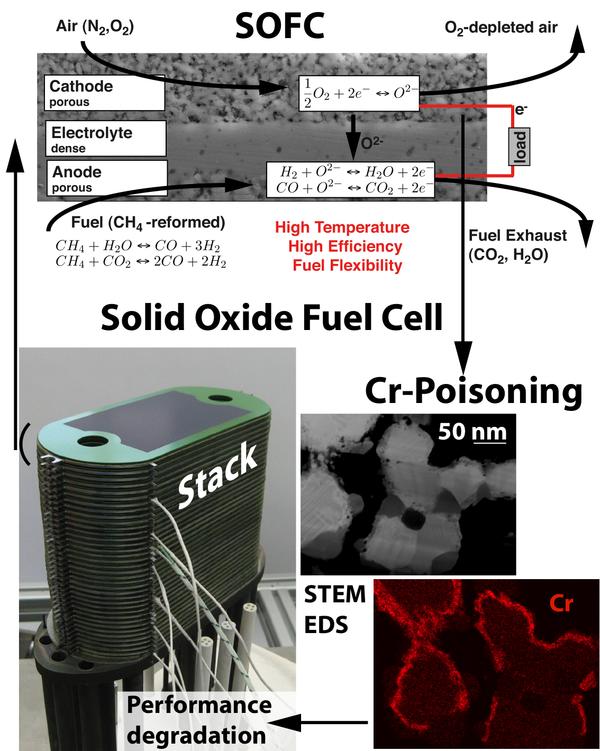Professor René Wasserman Award 2013 - Josef Andreas Schuler

© 2013 EPFL
Chromium Poisoning: The Needle in the SOFC Stack. Thesis EPFL, n° 5428. Dirs: Jan Van Herle & Aïcha Hessler-Wysser.
"For a comprehensive insight into slow incipient deactivation of catalysts when progressively contaminated by volatile traces, their quantification, localisation and avoidance".
Abstract: Contaminant poisoning, foremost by Cr species at the cathode, is one of the major nuts to crack towards commercialisation of SOFC technology, the most efficient energy conversion device for small scale combined heat and power generation poised to fulfill an important part of our future energy provision landscape worldwide, from both fossil and renewable sources. The contaminant poisoning occurs on different levels and scales (electrode catalyst, current collectors, metallic interconnection plates, balance-of-plant alloy components) at medium to long term operation, causing performance loss on the order of 1%/1000h and less. Everyone knows it's there but it's hard to detect, quantify and nail down. Indeed a needle in a SOFC stack which causes it to gently bleed down if left uncontrolled.
Full Text: Chromium Poisoning: The Needle in the SOFC Stack
